Marketing to the right audience is more important than ever, and Account-Based Marketing (ABM) has proven to be one of the most effective strategies for B2B success. Instead of broad, one-size-fits-all campaigns, ABM allows businesses to focus on high-value accounts with personalized, data-driven outreach, leading to stronger engagement, better conversion rates, and higher revenue.
ABM tools are evolving to offer more intelligent automation, AI-powered insights, and seamless integration with CRMs and other marketing platforms.
The right ABM tool can give your business a competitive edge, whether you want to enhance account targeting, streamline workflows, or measure campaign impact more effectively.
In this guide, we’ll break down the eight best ABM tools for 2025, highlighting their features, strengths, and ideal use cases to help you choose the perfect solution for your marketing strategy.
How to Choose the Right ABM Software
Choosing the proper Account-Based Marketing (ABM) tool is essential for running successful, highly targeted campaigns.
Here are the key features to consider when selecting an ABM tool in 2025:
1. Account Targeting & Segmentation
ABM is all about reaching the right accounts with the right message. A good ABM tool should help you identify high-value accounts by analyzing firmographic, behavioral, and intent data.
It should also enable you to segment accounts into different categories, such as industry, company size, or engagement level, ensuring that your outreach is highly relevant.
Additionally, AI-driven scoring models can help prioritize leads, allowing your team to focus on the most promising opportunities.
2. Personalization & Automation
The effectiveness of ABM depends on delivering personalized messaging that resonates with target accounts. The right tool should allow you to customize campaigns based on account-specific insights, ensuring that each interaction feels tailored and relevant.
Automation capabilities are also crucial, helping streamline tasks such as email sequences, ad targeting, and content delivery. With the right balance of automation and personalization, businesses can scale their ABM efforts without losing the human touch.
3. Multi-Channel Engagement
Successful ABM campaigns require engaging target accounts across multiple channels. A strong ABM tool should support personalized email marketing with automated follow-ups, enabling consistent and timely communication.
It should also offer account-based ad targeting on platforms like Google, Facebook, and LinkedIn, ensuring that your brand stays visible to key decision-makers.
4. Analytics & Reporting
Businesses need detailed analytics that provide actionable insights to measure the success of an ABM campaign. A good ABM tool should offer real-time performance tracking to monitor engagement and conversions, giving teams a clear understanding of how their efforts are performing.
Attribution models help determine which touchpoints contribute most to conversions, ensuring that marketing resources are allocated effectively. Predictive analytics can further optimize targeting by forecasting campaign success and identifying opportunities for improvement.
8 Best ABM Tools
The right ABM tool can help you target high-value accounts, personalize outreach, and drive conversions. Here are the top eight ABM platforms to consider.
1. Terminus
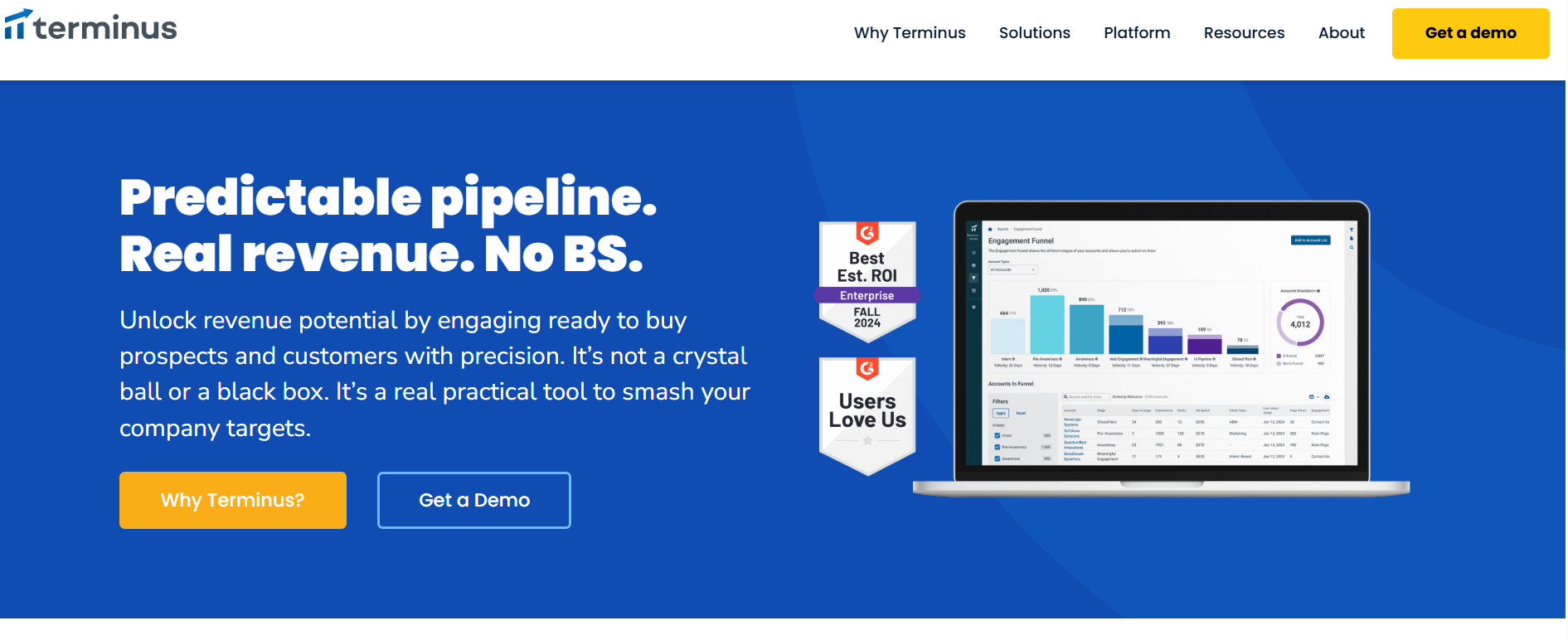
Terminus is a comprehensive ABM platform designed to help B2B marketers create multi-channel campaigns, engage target accounts, and measure impact. It offers robust advertising capabilities, email marketing, sales intelligence, and deep analytics to drive revenue growth.
Key Features
- Run targeted display, social, and retargeting ads for specific accounts.
- Integrates email, chat, and LinkedIn for personalized outreach.
- Provides account insights to help sales teams prioritize outreach.
- Identifies and segments high-value accounts.
Pros
- Strong account-based advertising capabilities.
- Seamless integration with CRMs and marketing automation tools.
- Easy-to-use interface with clear reporting and analytics.
Cons
- Ad costs can add up for small businesses.
- Limited advanced personalization compared to competitors.
2. Demandbase
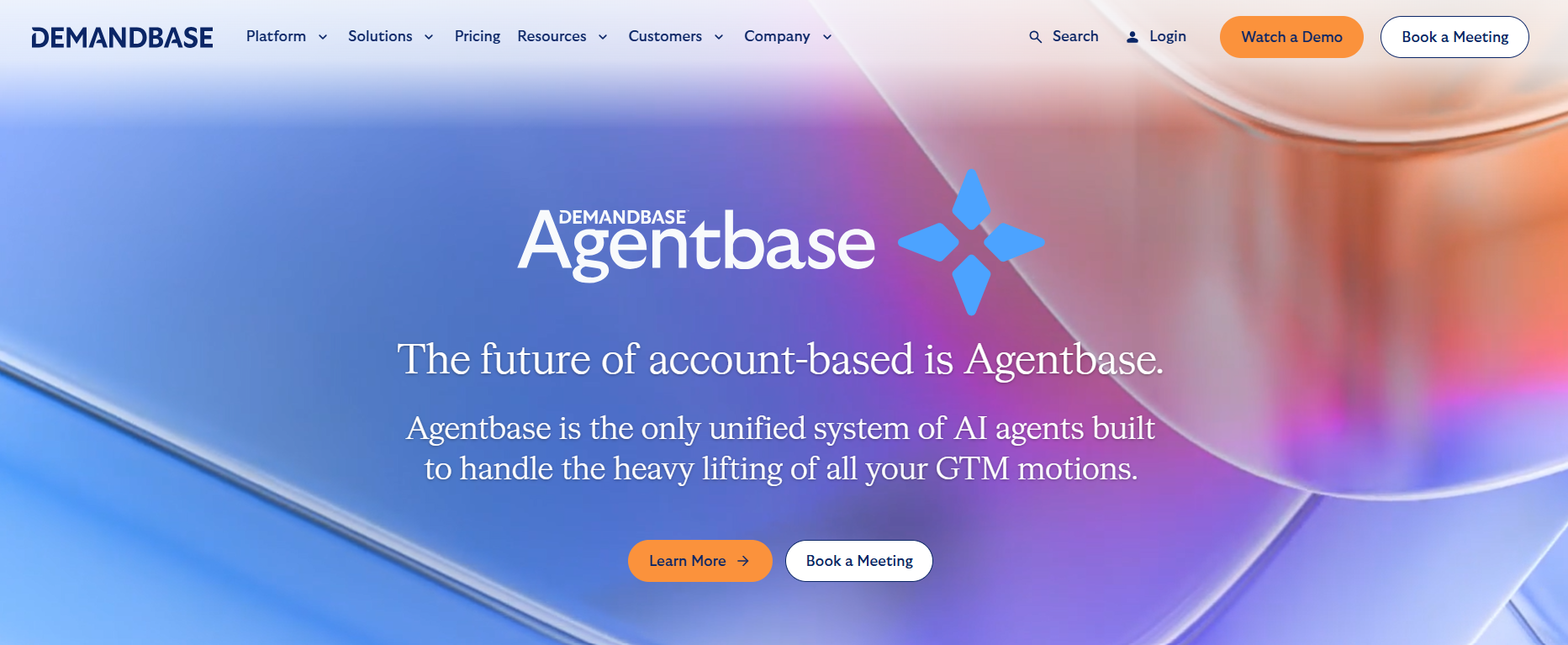
Demandbase is a leading ABM platform designed to help B2B companies identify, engage, and convert high-value accounts. With AI-driven insights, intent data, and multi-channel engagement, Demandbase empowers marketing and sales teams to create highly personalized campaigns that drive revenue growth.
The platform integrates seamlessly with CRMs, marketing automation tools, and advertising networks, making it a comprehensive solution for account-based marketing.
Key Features
- Uses intent data and predictive analytics to identify high-value target accounts.
- Enables account-based advertising, website personalization, and targeted email campaigns.
- Provides real-time insights to help sales teams engage the right prospects at the right time.
- Offers detailed attribution models and engagement tracking to measure ABM success.
- Works with platforms like Salesforce, HubSpot, Marketo, and LinkedIn.
Pros
- Advanced AI-powered targeting and segmentation.
- Strong integration with major CRMs and marketing automation tools.
- Powerful analytics and reporting capabilities.
- Scalable for both mid-sized and enterprise-level businesses.
Cons
- Steeper learning curve due to its advanced features.
- Higher pricing compared to some competitors, making it less suitable for small businesses.
3. 6sense
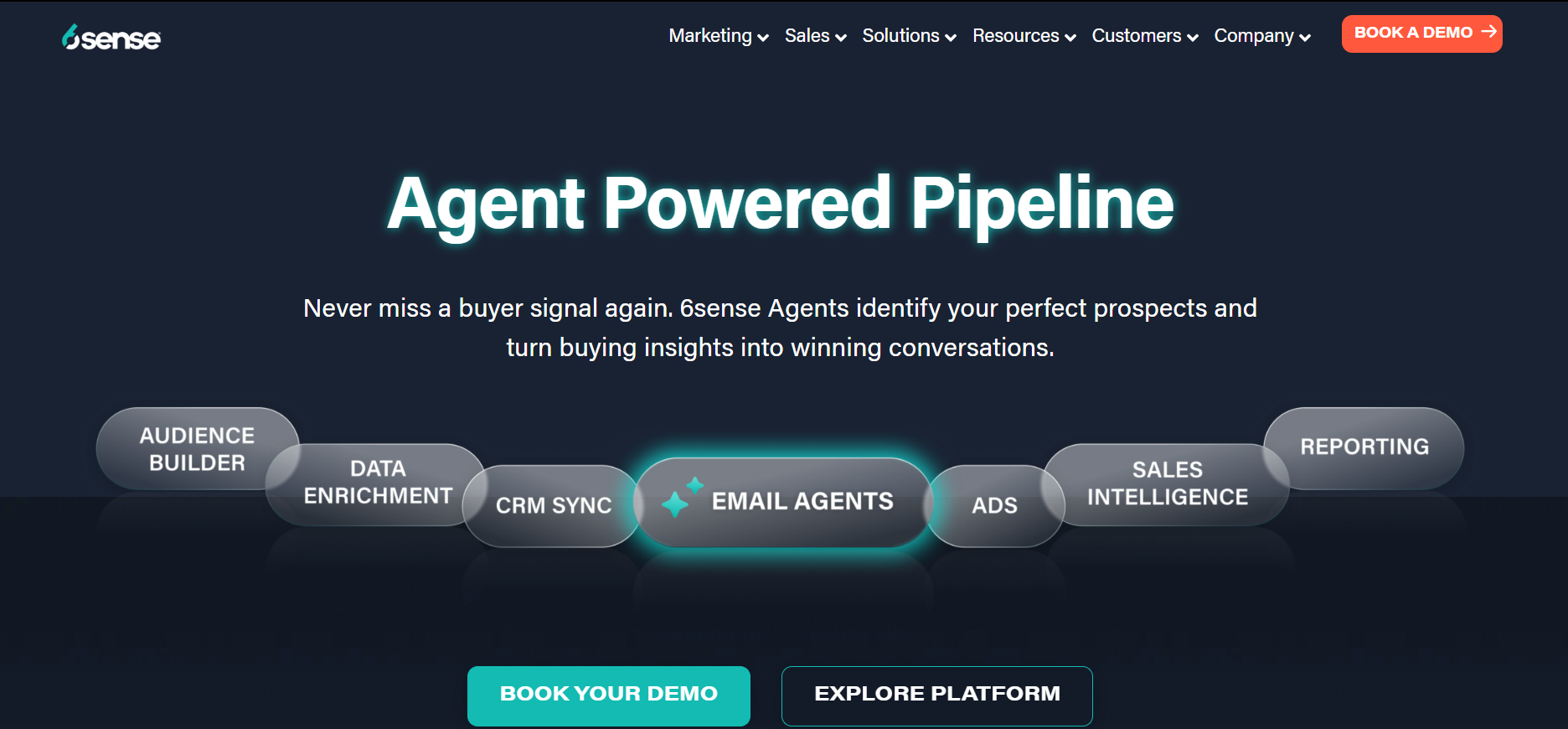
6sense is an AI-powered ABM platform that helps B2B businesses predict buyer intent, prioritize accounts, and execute personalized, data-driven campaigns. By leveraging intent signals and automation, 6sense enables marketing and sales teams to engage prospects at the right time with the right message, improving conversion rates and ROI.
Key Features
- Identifies in-market accounts based on behavioral and firmographic insights.
- Uses machine learning to score and prioritize accounts for better targeting.
- Supports email, digital ads, LinkedIn, and website personalization.
- Provides real-time insights to help sales teams engage high-priority accounts.
- Offers attribution tracking and ROI measurement for ABM campaigns.
Pros
- Advanced AI-driven insights for precise account targeting.
- Strong predictive analytics to prioritize leads effectively.
- Seamless integration with major CRMs and marketing tools.
Cons
- Can be complex to set up and fully optimize.
- Pricing is on the higher end, making it less accessible for smaller businesses.
4. RollWorks
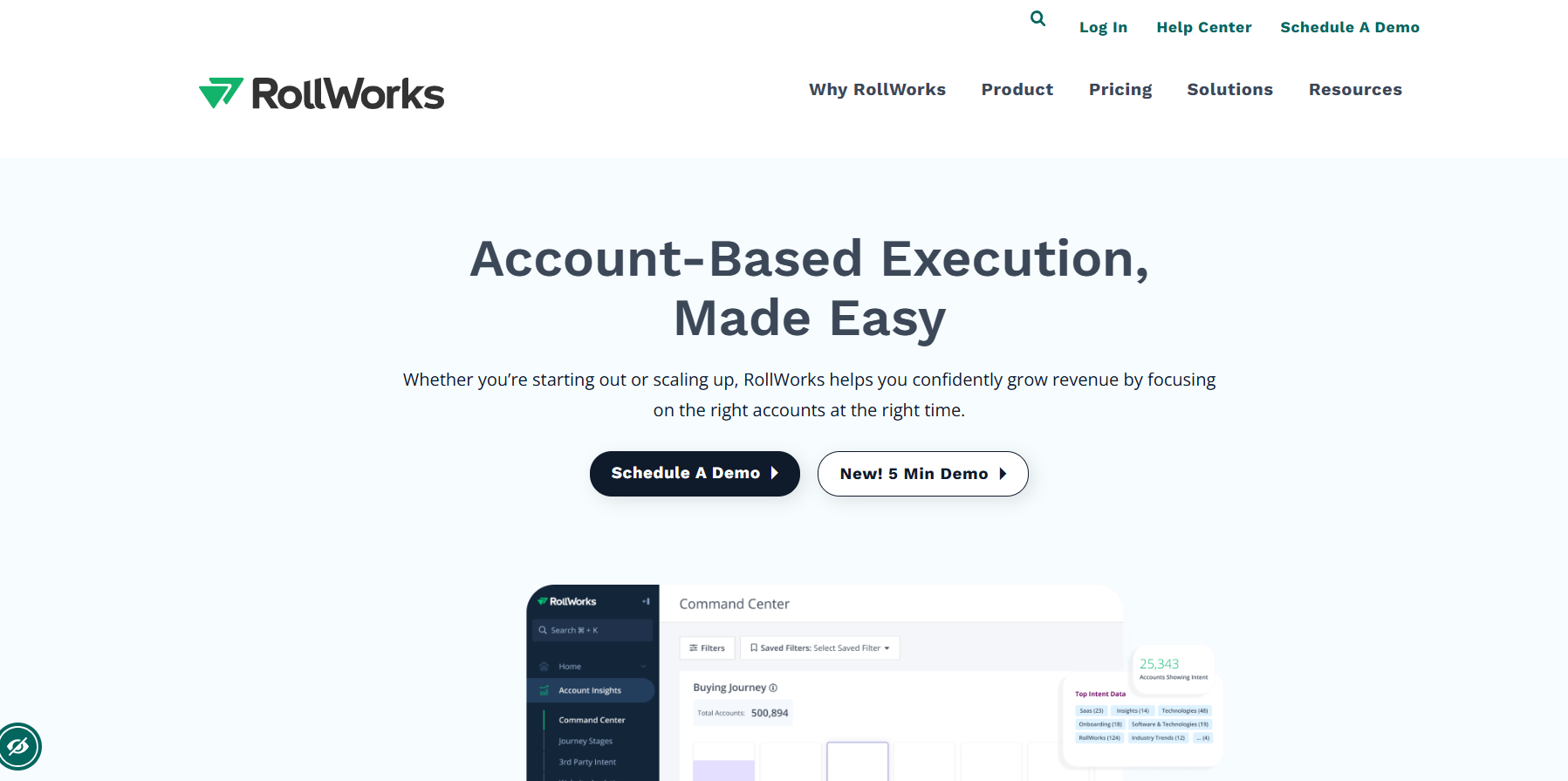
RollWorks is a scalable ABM platform that helps businesses identify, engage, and convert high-value accounts through data-driven targeting and automated marketing campaigns.
Designed for both growing and enterprise-level B2B companies, RollWorks offers account segmentation, personalized advertising, and deep analytics to improve marketing and sales alignment.
Key Features
- Uses firmographic, intent, and engagement data to pinpoint high-value accounts.
- Runs personalized display and social media ads to engage decision-makers.
- Supports email, website personalization, and LinkedIn integration.
- Provides account insights and engagement signals to sales teams.
- Measures ABM performance and campaign effectiveness.
Pros
- Easy to use with a seamless setup for targeting and advertising.
- Affordable options for small to mid-sized businesses.
- Strong intent data and audience segmentation capabilities.
Cons
- Limited advanced automation features compared to high-end ABM platforms.
- Customization options for reporting could be more extensive.
5. Metadata.io
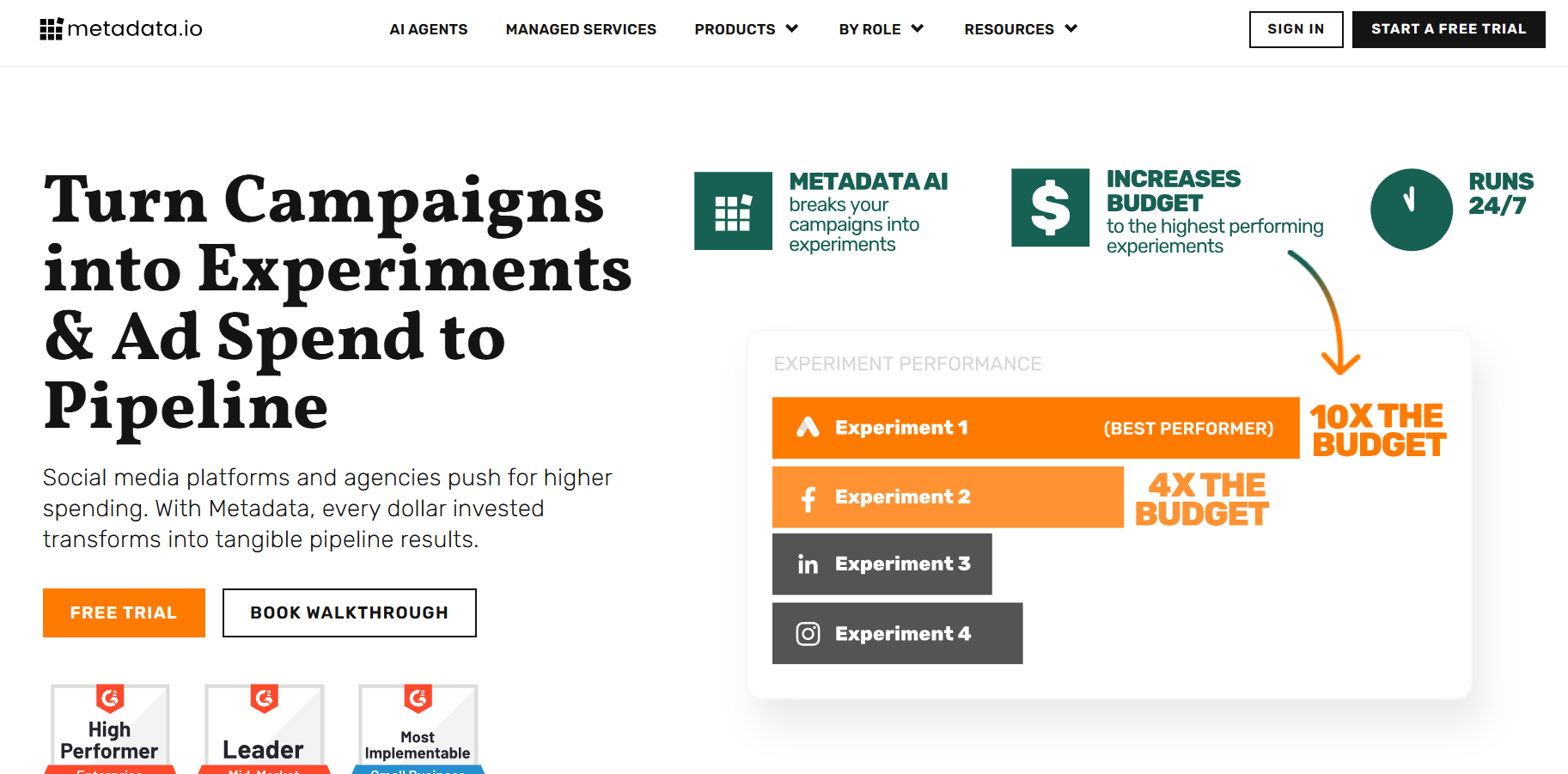
Metadata.io is an AI-powered ABM platform that automates demand generation by optimizing digital ad campaigns, targeting high-value accounts, and improving marketing efficiency. It helps B2B marketers scale personalized campaigns across multiple channels while leveraging data-driven insights to maximize ROI.
Key Features
- Automates audience targeting, ad testing, and budget allocation.
- Supports LinkedIn, Facebook, Google Ads, and programmatic advertising.
- Uses behavioral and firmographic data to identify in-market accounts.
- Enhances lead quality with automated data enrichment.
- Connects with HubSpot, Marketo, Salesforce, and other platforms.
Pros
- AI-driven automation saves time and optimizes campaign performance.
- Strong targeting and personalization capabilities.
- Scalable for businesses looking to run high-volume campaigns.
Cons
- Higher learning curve for beginners.
- Premium pricing may not be ideal for smaller businesses.
6. Madison Logic
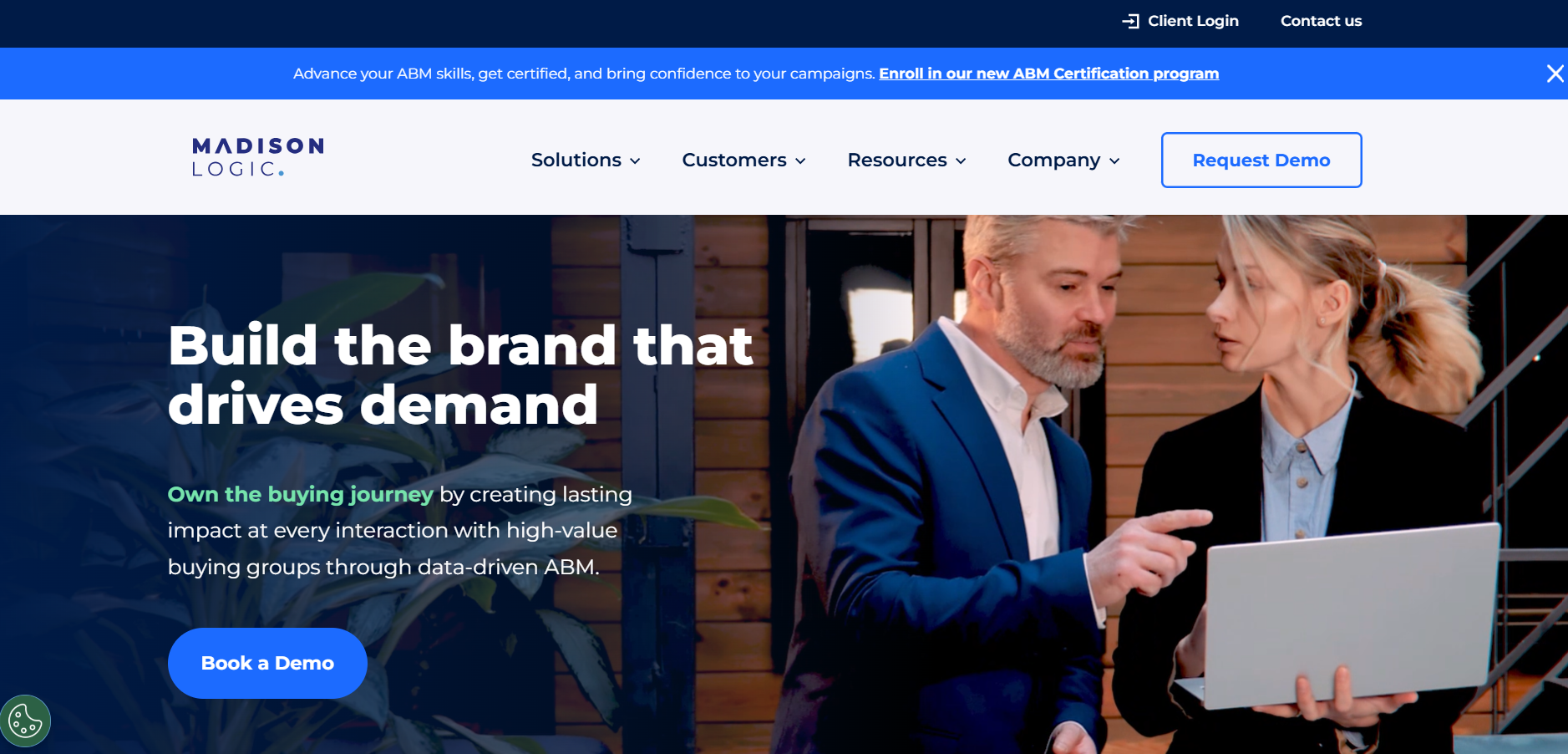
Madison Logic is a data-driven ABM platform that helps B2B marketers accelerate pipeline growth by combining intent data, multi-channel engagement, and measurement tools.
It enables businesses to identify in-market accounts, deliver personalized messaging, and track the impact of their campaigns across different channels.
Key Features
- Uses behavioral signals to identify high-intent accounts.
- Supports targeted display advertising, content syndication, and LinkedIn outreach.
- Provides account engagement insights to help sales teams prioritize outreach.
- Tracks engagement, conversion rates, and overall campaign performance.
- Works seamlessly with platforms like Salesforce, Marketo, and HubSpot.
Pros
- Strong intent data for precise targeting.
- Multi-channel approach helps maximize engagement.
- Robust analytics to measure campaign effectiveness.
Cons
- Pricing may be high for smaller businesses.
- Requires strategic setup to fully optimize campaigns.
7. LeanData
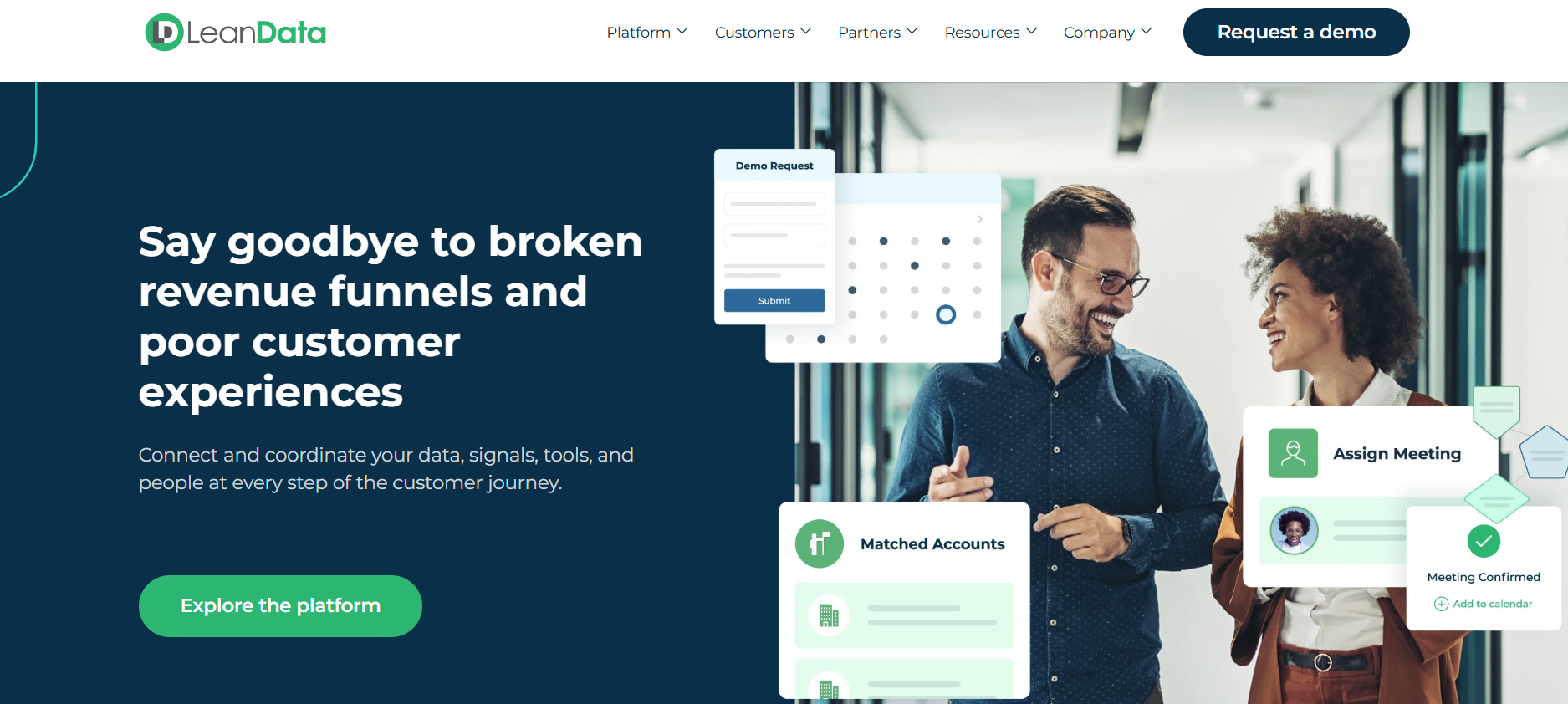
LeanData is a revenue orchestration platform designed to streamline lead management, routing, and engagement for B2B companies. Unlike traditional ABM tools focused solely on marketing, LeanData ensures that high-value accounts are efficiently assigned to the right sales teams, improving response times and conversion rates.
Key Features
- Automatically assigns leads to the right sales reps based on custom rules.
- Ensures leads are correctly linked to existing accounts for seamless follow-ups.
- Provides visibility into prospect interactions and sales activities.
- Works seamlessly with Salesforce to optimize lead and account management.
- Automates sales processes to improve efficiency and reduce manual work.
Pros
- Helps sales teams prioritize and act on high-value leads faster.
- Strong integration with Salesforce for streamlined data management.
- Reduces lead response time, improving conversion rates.
Cons
- Primarily focused on sales enablement rather than full ABM execution.
- Requires proper setup and configuration to maximize effectiveness.
8. Clearbit
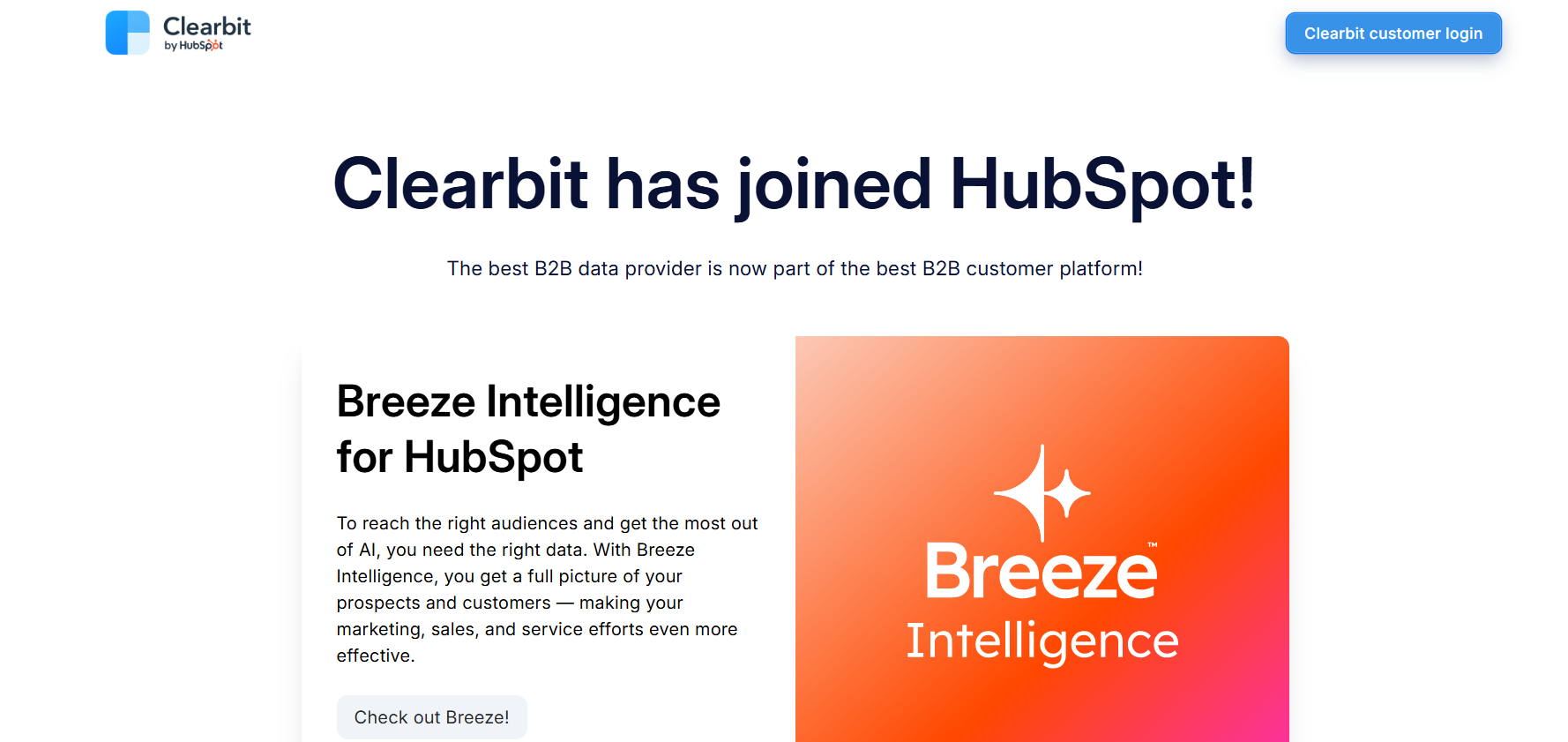
Clearbit is a data-driven ABM tool that helps B2B companies enrich customer data, identify high-value accounts, and personalize marketing efforts. By leveraging real-time firmographic and intent data, Clearbit enables businesses to better target, segment, and engage their ideal customers.
Key Features
- Enhances lead and account records with firmographic, technographic, and intent data.
- Identifies and prioritizes accounts based on engagement and buying signals.
- Customizes website experiences for different visitors based on their company details.
- Provides insights to optimize outreach strategies.
- Works with HubSpot, Salesforce, Marketo, and other marketing platforms.
Pros
- High-quality data for precise account targeting and personalization.
- Real-time insights help sales and marketing teams act quickly.
- Easy integration with popular CRM and marketing tools.
Cons
- Pricing can be expensive for small businesses.
- Requires a well-defined strategy to make the most of its data capabilities.
Final Thoughts
The right ABM tool can transform how you target, engage, and convert high-value accounts. From AI-powered insights to multi-channel outreach and data-driven personalization, there’s a solution that fits your needs.
As ABM strategies become more sophisticated in 2025, investing in a platform that aligns with your marketing and sales goals will help you drive better results.
Take the time to assess your options, leverage free trials, and choose a tool that empowers your team to maximize success.
Frequently Asked Questions
What is social proof in digital marketing?
Social proof in digital marketing is a psychological phenomenon where brands use tools like online reviews, customer testimonials, and influencer marketing to influence the purchase decisions of potential customers by showing them the correct behaviour of others.
What is the difference between affiliate marketing and dropshipping?
Affiliate marketing involves promoting products for other companies and earning a commission on sales, without managing inventory or customer service. Dropshipping allows you to sell products directly from suppliers to customers without stocking inventory, but you manage customer service and set prices.
What distinguishes successful B2B marketing strategies from conventional tactics?
Successful B2B marketing strategies go beyond conventional tactics by prioritising the establishment of enduring relationships and the consistent delivery of value. This approach, combined with a proactive response to changing market dynamics, sets successful strategies apart in the competitive B2B landscape.
How do AI CRM software support sales and marketing professionals?
AI CRM software supports sales and marketing professionals by automating routine tasks like data entry and customer segmentation, allowing them to focus on more strategic sales activities. It provides insights into customer behaviour and sales performance, enabling the optimization of sales strategies and marketing efforts.
What role do thought leadership initiatives play in B2B marketing?
Thought leadership initiatives are pivotal in B2B marketing as they position businesses as industry authorities. By sharing valuable insights, expertise, and innovative ideas, businesses can establish trust and credibility among their target audience. Thought leadership not only enhances brand visibility but also attracts and engages potential clients who seek knowledgeable and trustworthy partners.

Joel Olawanle is a Software Engineer and Technical Writer with over three years of experience helping companies communicate their products effectively through technical articles.
View all posts by Joel Olawanle




















